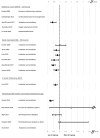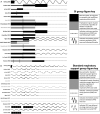Improving Newborn Respiratory Outcomes With a Sustained Inflation: A Systematic Narrative Review of Factors Regulating Outcome in Animal and Clinical Studies
- PMID: 33194881
- PMCID: PMC7658322
- DOI: 10.3389/fped.2020.516698
Improving Newborn Respiratory Outcomes With a Sustained Inflation: A Systematic Narrative Review of Factors Regulating Outcome in Animal and Clinical Studies
Abstract
Respiratory support is critically important for survival of newborns who fail to breathe spontaneously at birth. Although there is no internationally accepted definition of a sustained inflation (SI), it has commonly been defined as a positive pressure inflation designed to establish functional residual capacity and applied over a longer time period than normally used in standard respiratory support (SRS). Outcomes vary distinctly between studies and to date there has been no comprehensive investigation of differences in SI approach and study outcome in both pre-clinical and clinical studies. A systematic literature search was performed and, after screening, identified 17 animal studies and 17 clinical studies evaluating use of a SI in newborns compared to SRS during neonatal resuscitation. Study demographics including gestational age, SI parameters (length, repetitions, pressure, method of delivery) and study outcomes were compared. Animal studies provide mechanistic understanding of a SI on the physiology underpinning the cardiorespiratory transition at birth. In clinical studies, there is considerable difference in study quality, delivery of SIs (number, pressure, length) and timing of primary outcome evaluation which limits direct comparison between studies. The largest difference is method of delivery, where the role of a SI has been observed in intubated animals, as the inflation pressure is directly applied to the lung, bypassing the obstructed upper airway in an apnoeic state. This highlights a potential limitation in clinical use of a SI applied non-invasively. Further research is required to identify if a SI may have greater benefits in subpopulations of newborns.
Keywords: animal models; cardiorespiratory function; clinical trials; newborn respiratory outcome; resuscitation and respiratory support; sustained inflation; ventilation.
Copyright © 2020 Lambert, Hooper, te Pas and McGillick.
Figures




References
Publication types
LinkOut - more resources
Full Text Sources

